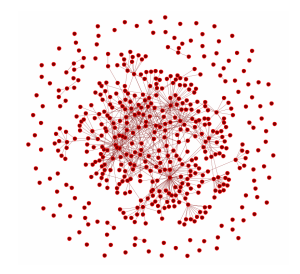Back in Nov-Dec 2011 social scientists Anatoliy Gruzd, PhD and Caroline Haythornthwaite, PhD, did a social network analysis of #hcsmca.
Back in Nov-Dec 2011 social scientists Anatoliy Gruzd, PhD and Caroline Haythornthwaite, PhD, did a social network analysis of #hcsmca. The results were recently published in the Journal Medical of Internet Research – Enabling Community Through Social Media.
This week Feb. 5, @gruzd and @hthwaite will be our special guests on #hcsmca. They will discuss the findings of their analysis, which I hope will lead to an animated conversation as we explore a reflection of ourselves.
In their study of #hcsmca, the authors asked:
-
What accounts for the relative longevity of this particular online community? Is it because of the founder’s leadership and continuing involvement, or are there core members who are actively and persistently involved in this community?
-
What is the composition of this community in general? And, more specifically, does their professional role determine a person’s centrality within this community? This allowed the authors “to understand generally how professional roles affect online conversational dynamics, and more specifically whether this online community is a welcoming place for a wide range of professionals or is, instead, dominated by professionals from a particular group.”*
Here’s a selection of some the findings that were of particular significance to me as the Founder and Community Manager of #hcsmca:
“Results from the network analysis reveal a cohesive group.”
The network visualization of the #hcsmca shows a “fairly densely connected, single component of posters who are reading and responding to each others’ posts, suggesting an engaged community, paying attention to the topic and actively conversing around the common topic.”
“Noticeably absent from [the visualization] are subcliques that carry on side conversations with each other. This shows that the #hcsmca community is not fractionated, but rather that participants are all engaged with the single conversational network.”
Not surprisingly, as the community organizer, I post the most messages. But there are other “active participants who contribute heavily to the community, posting about the same number of messages each (approximately 10% of the messages posted by the top 10 posters all together). Such actors also contribute to the critical mass of the conversation, but the more important result is that there are several people the community can rely on to keep the conversation going, increasing the robustness of the ongoing activity.”
The authors also found “no apparent preferential attachment among people in the same professional group. In other words, the formation of connections among community members is not necessarily constrained by their professional status. This result indicates connections are more prevalent across members with different professional backgrounds and occupations in this community, which in turn may suggest that this is a welcoming environment that stimulates knowledge exchange and learning across professional boundaries.”
